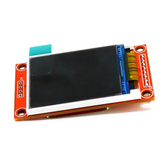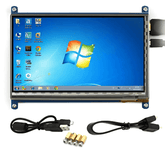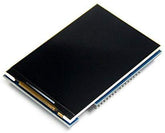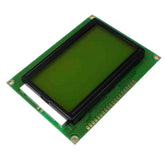How LCD Displays Work
Summary
LCD displays have revolutionized the way we consume media, but what sets them apart from other display technologies?
This blog delves into the inner workings of LCDs, explaining how they utilize polarized light and liquid crystals to create sharp, colorful images.
The article also highlights the differences between LCDs and plasma displays, as well as outlining the basic principles behind LCD technology and the numerous advantages it offers. If you're curious about the science behind the screens, this is a must-read.
The liquid crystal display (LCD) is a commonly used flat-panel display in electronic devices such as smartphones, televisions, and computer monitors. However, have you ever questioned how an LCD operates? In this article, we'll examine the internal workings of an LCD and grasp the fundamental principle of LCDs.
What is LCD Technology?
Liquid crystals are a type of matter that have properties of both liquids and solids. They have a defined molecular structure like solids, but they also flow like liquids.
These unique properties make liquid crystals useful in a wide range of electronic devices, particularly in LCD (liquid crystal display) technology.
In an LCD, liquid crystals are used to manipulate the direction of the light, creating the image on the screen. They are sandwiched between two layers of glass, one of which is coated with a polarizing film.
When an electric current is applied to the liquid crystals, they align themselves in a specific direction. This alignment controls the amount of light passing through the polarizing film, creating the image on the screen.
The liquid crystals in an LCD are responsible for blocking or allowing light to pass through the display, by changing their alignment based on the applied electrical current.
When the liquid crystals are aligned with the polarizer, no light can pass through. When they are not aligned, light can pass through. By controlling the alignment of the liquid crystals, the LCD can create a wide range of colors and shades to make the image on the screen.

Explore our High-Resolution Raspberry Pi Displays for Any Project!
What's different about LCDs?
LCD monitors are the same as LED monitors. However, not every LCD monitor uses LEDs. Liquid crystals are used in both kinds of screens to create images.
The backlights make the difference. An LED monitor employs light-emitting diodes, whereas a typical LCD monitor in contrast to an LED monitor uses light-emitting an LED monitor uses light-emit LED displays that often offer better picture quality, but they also have a variety of backlight setups.
What is polarized light & how LCDs use liquid crystals and polarized light?
Polarized light is light that vibrates in a specific direction. In an LCD, polarized light is used to create the image on the screen. The liquid crystals in an LCD are sandwiched between two layers of glass.
A polarizing film coats one of the glass layers, enabling the passage of light solely in a particular direction. Subsequently, liquid crystals are employed to control the light's direction, which produces the display image.

How colored pixels in LCDs work?
An LCD pixel comprises three sub-pixels - red, blue, and green - that operate in unison to create diverse colors by regulating the quantity of light that passes through each sub-pixel. This is known as the RGB color model. By adjusting the amount of light passing through each sub-pixel, a wide range of colors can be created.
Upgrade Your Raspberry Pi with a 3.5” Touchscreen Display
Difference between LCD and Plasma?
LCD and Plasma are two different types of flat-panel displays. The main difference between them is the way they create the image on the screen.
|
S. No |
Basis |
Plasma Display |
LCD |
|
1. |
Technology Used |
The plasma display's display is dependent on the light bulb and a combination of gases that are placed in between its two plates. |
The idea behind this type of display is based on the liquid crystal material's ability to block or transmit polarized light. |
|
2. |
Weight |
heavy |
Less weight |
|
3. |
Life-Span |
Shorter lifespan |
Longer lifespan |
|
4. |
Cost |
Cheaper |
Costly |
|
5. |
Power Consumption |
High |
Low |
|
6. |
Brightness |
lower brightness |
high brightness |
|
7. |
Heat |
More heat |
Less heat |
How does an LCD display work?
An LCD display works by manipulating the properties of liquid crystals and polarized light to create an image on the screen. The basic components of an LCD include a backlight, a color filter, a liquid crystal layer, and two polarizing filters.
Backlight:
The backlight provides the source of light for the display. It is typically made up of fluorescent lamps or LED lights.
Color filter:
The color filter is a layer of colored pigment that sits in front of the backlight. It is used to create different colors in the image.
Liquid crystal layer:
The liquid crystal layer is the heart of the LCD. It consists of millions of tiny liquid crystals that are sandwiched between two glass plates.
Polarizing filters:
The two polarizing filters are located on either side of the liquid crystal layer. They are used to control the direction of the light passing through the liquid crystal layer.
The liquid crystals in an LCD are responsible for blocking or allowing light to pass through the display, by changing their alignment based on the applied electrical current.
By controlling the alignment of the liquid crystals, the LCD can create a wide range of colors and shades to make the image on the screen. This is done by adjusting the amount of light passing through each sub-pixel (red, blue, and green) of the display. The combination of these colored sub-pixels creates the final image.
Basic principle of LCD
The principle of an LCD is that it uses the properties of liquid crystals to control the amount of light passing through the display, creating an image on the screen. This image is created by adjusting the alignment of the liquid crystals and by adjusting the amount of light passing through each sub-pixel, creating different colors and shades.
Advantages of LCD
- Energy Efficiency.
- Long-lasting.
- LED backlight.
- No screen burn-in.
- Supports small and low-profile sizes.
Conclusion
LCD technology has revolutionized the display industry by providing clearer and more energy-efficient displays. By using liquid crystals and polarized light, LCDs create high-quality images that are essential in modern-day electronics.
Furthermore, their longer lifespan and lower power consumption make them an attractive choice for consumers. Upgrade your electronics today with an LCD display and experience the difference for yourself. Don't wait, explore our range of LCD displays now!
If you appreciate our work don't forget to share this post and leave your opinion in the comment box.
Please do check out other blog posts about Popular Electronics
Do check out Get Started With 3.5” LCD for Raspberry Pi
Make sure you check out our wide range of products and collections (we offer some exciting deals!)












